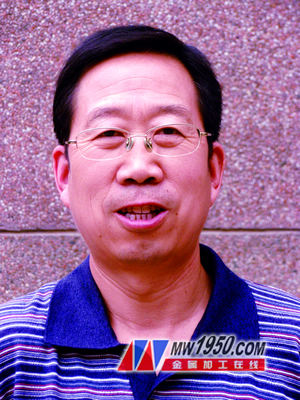With the rapid advancement of global economic integration, the automotive industry is facing new challenges and opportunities driven by developments in electronic telecommunications, control systems, communication technologies, large-scale data processing, energy efficiency improvements, and stricter environmental regulations. These factors have intensified competition among automakers, pushing them to adopt more efficient and sustainable production methods. As automation technology continues to evolve, the automotive manufacturing sector must address key technical issues. The following are the main research directions that China should focus on in the future regarding automotive panels.

Deputy Chief Engineer of Xuheng Group
(1) Research into high-strength and ultra-high-strength steel is essential for reducing vehicle weight. While major domestic steel producers can now manufacture cold-formed hot-rolled steel sheets such as BS550MC, BS700MC, TRIP, CP, and AHSS, which meet lightweight requirements, the range of available materials remains limited. Expanding the variety and achieving mass production is crucial for future development.
(2) The development of servo presses is vital for addressing the springback issue in high-strength steels and improving production efficiency. Domestic press manufacturers should invest in large-scale closed-loop servo presses with tonnages exceeding 10 MN to meet growing industry demands.
(3) Closed multi-link presses offer an effective solution to both springback and productivity challenges. Currently, most domestic forging companies only produce small and medium-tonnage models, while large-tonnage versions require accelerated R&D efforts to catch up with international standards.
(4) Multi-link multi-station presses represent a more advanced production system, integrating features like automated feeding, material detection, oiling, and robotic handling. These systems significantly enhance efficiency and reduce manual labor. However, few domestic enterprises have the capability to produce such advanced equipment, and government support is needed to promote innovation in this area.
(5) Automatic feeding technology plays a critical role in modern press lines. It typically includes demolition machines, large presses, three-coordinate transfer systems, and palletizing stations. Some systems use robots instead of traditional clamps for better precision. Although domestic companies have made progress, high-end three-dimensional feeding systems are still dominated by foreign firms, necessitating further investment and technology introduction.
(6) Thermoforming technology for high-strength and ultra-high-strength steel is an emerging field. While some domestic companies have started exploring this area, it is still in its early stages. Accelerating R&D in this domain is essential for long-term competitiveness.
(7) Multi-station presses with automated production lines are widely used in leading automotive industries abroad. For example, over 70% of U.S. auto companies' press lines are multi-station systems. In Japan and Germany, the adoption rate is also high. While Chinese enterprises have made strides in small and medium-tonnage models, large-tonnage versions remain underdeveloped. Greater investment and policy support are needed to promote their widespread use.
(8) Research into large-tonnage presses is necessary due to the increased forming forces required for high-strength steels. Current domestic capabilities are limited to 50 MN mechanical presses, while advanced applications demand up to 93 MN. Developing large-tonnage mechanical presses can help bridge the gap until thermoforming equipment becomes more accessible.
(9) Advancements in press control technology, including field bus systems and remote diagnostics, are crucial for improving operational efficiency and enabling automation. This will not only enhance press performance but also support the continuous evolution of automated production processes in the forging industry.
Solar Parking Lot Light
Solar parking lot lighting is an efficient means to provide lighting without the need for standard utility power. It provides cost savings by eliminating the need to trench standard electric wires for installation and providing no electric bill for life. Commercial solar lights for parking lots have been installed in many businesses and the parking lots and provide security, sustainability, and an overall green image. It uses aluminum alloy, polycrystalline solar panel, led, motion sensor, and rechargeable lithium-ion battery pack composition. We have designed and developed solar parking lamps with good waterproof performance stability.
Solar Parking Lights,Solar Panel Parking Lot Lights,Solar Led Parking Lot Lights,Solar Powered Parking Lot Lights
Jiangmen City Pengjiang District Qihui Lighting Electrical Appliances Co., Ltd , https://www.qihuilights.com

